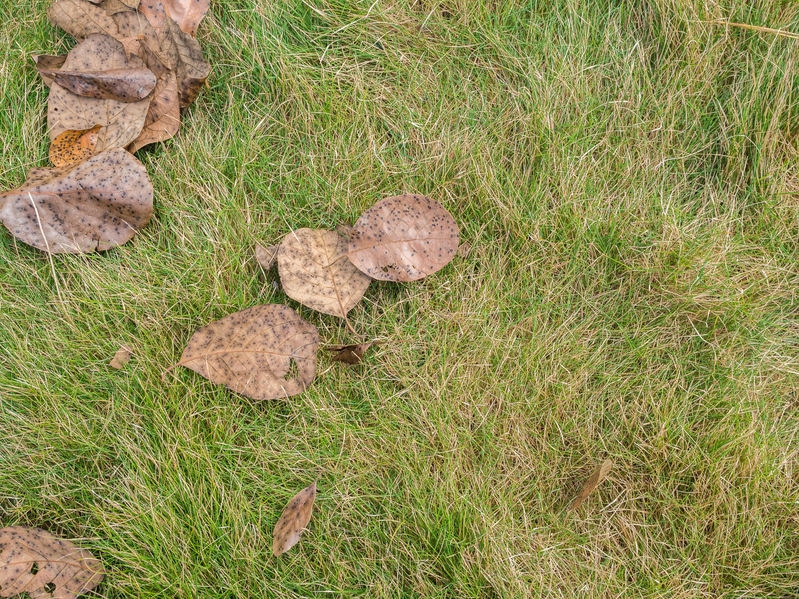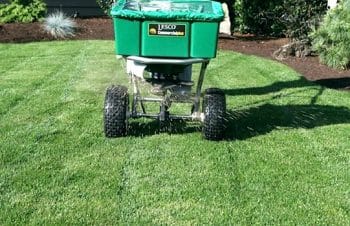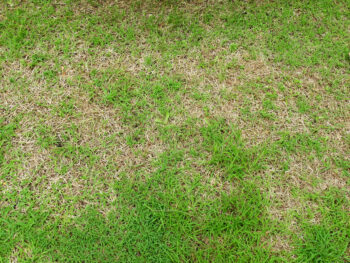When it comes to fungal diseases in your lawn, there are several types of leaf spot diseases. However, aside from gray leaf spot disease, many of them are lumped together. Let’s take a look at common characteristics of leaf spot diseases, and how gray leaf spot differs a little bit from the others.
Need help applying herbicides and fungicides in your yard? Visit our service page for weed control.
Leaf Spot Diseases
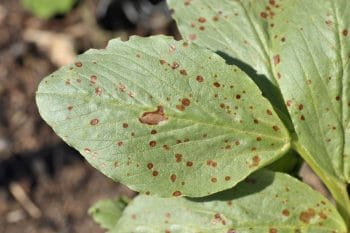 While leaf spot diseases occurs most commonly in trees and shrubs, they can also affect both warm- and cool-season grasses such as bluegrass, rye, fescues, and Bermuda grass. Warm-season grasses are more vulnerable during extended periods of cool, wet weather, while cool-season grasses are vulnerable in warmth and humidity.
While leaf spot diseases occurs most commonly in trees and shrubs, they can also affect both warm- and cool-season grasses such as bluegrass, rye, fescues, and Bermuda grass. Warm-season grasses are more vulnerable during extended periods of cool, wet weather, while cool-season grasses are vulnerable in warmth and humidity.
Compacted soil, thick thatch, and excessive nitrogen all help leaf spot diseases spread more easily. Additionally, cutting it too short can leave your lawn more vulnerable. If you already suspect the presence of a fungal disease, bag your grass clippings to help prevent spreading the fungus throughout your yard.
Not only do these diseases cause yellow, red, brown, or black spots on the grass blades, but they quickly infect the crown and roots of your grass as well. This means it can spread both via spores and throughout the thatch and root system.
Once the fungi infect the sheaths, stolons, and root system of the grass, this is called “melting out.” Entire patches of turf will begin to die out, with a dry rot that is visible once uprooted.
Aerating your soil and treating your lawn with a fungicide are effective measures to prevent leaf spot diseases from setting in. Unlike some other fungal diseases, fungicides are often only effective with leaf spot diseases before the infection becomes noticeable.
Gray Leaf Spot Disease
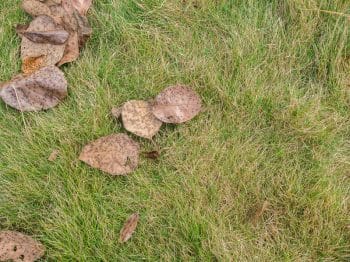 As a disease that prefers warmer weather, the signs of gray leaf spot disease tend to show up in August and September. Here in North Texas, the conditions that provide maximum vulnerability are long, hot days over 80 degrees, with humid evenings.
As a disease that prefers warmer weather, the signs of gray leaf spot disease tend to show up in August and September. Here in North Texas, the conditions that provide maximum vulnerability are long, hot days over 80 degrees, with humid evenings.
Any time your grass experiences a lengthy period of moisture, there is a risk of this disease setting in. This means it’s important to monitor shady and low-lying areas in your lawn, especially from late spring to early fall when the weather is warm.
Gray leaf spot disease prefers St. Augustine grass, fescues, and rye grass. While it’s more common in larger fields, it can still affect residential lawns. One preventative measure you can take with your own turf is avoiding over-fertilization with nitrogen-rich products.
Gray leaf spot disease begins with small reddish-brown patches, and it spreads quickly. As the fungus takes effect, the blades will bow into a hook-like shape and begin to turn greyish-brown with fungal spores. The grey tint is especially noticeable when the infected leaves are wet.
The spores can spread quickly throughout your yard, hitching a ride on shoes, lawn equipment, and organic debris. The best way to handle gray leaf spot disease is with a fungicide, used as soon as the disease is recognized.

